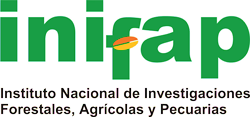Supervivencia y crecimiento de una reforestación de Pinus cembroides Zucc. en el noreste de México
DOI:
https://doi.org/10.29298/rmcf.v15i86.1466Palabras clave:
Mortandad, muestreo, plantación, prueba de t, reforestación, prácticas de conservaciónResumen
Se estudió la supervivencia y crecimiento del Pinus cembroides Zucc. en el ejido La Tapona municipio de Galeana, Nuevo León, con el objetivo de evaluar el efecto de las terrazas individuales y tinas ciegas en la supervivencia y crecimiento en diámetro basal, altura total y diámetro de copa de una plantación de 10 años. Se evaluaron 13 transectos (en curvas de nivel) de cada uno de los tratamientos (26 en total), mediante un diseño de muestreo sistemático aleatorio. De cada uno de los transectos se tomó información de todos los individuos, como el diámetro a los 10 cm de la base, la altura total (m) y el diámetro de copa (m). Para determinar si existían diferencias significativas en la supervivencia de la especie con respecto a los diferentes tratamientos (terrazas individuales y tinas ciegas), se realizó un análisis de varianza utilizando la prueba t de Student y la prueba de U de Mann-Whitney para las variables de altura, diámetro a los 10 cm y el diámetro de copa. Los resultados indicaron un promedio general de supervivencia del 52.69%; mientras que en tinas ciegas fue de 53.71%, y en las terrazas individuales se obtuvo el 51.68%. Sin embargo, las pruebas determinaron la ausencia de diferencias significativas en el crecimiento de los individuos dentro de las obras de conservación.
Descargas
Citas
Alanís-Rodríguez, E., A. Mora-Olivo y J. S. Marroquín-de la Fuente. 2020. Muestreo Ecológico de la Vegetación. Universidad Autónoma de Nuevo León. Monterrey, Nuevo León, México. 258 p. https://www.researchgate.net/publication/343137042 (5 de noviembre de 2023).
Céspedes-Flores S. y E. Moreno-Sánchez. 2010. Estimación del valor de la pérdida de recurso forestal y su relación con la reforestación en las entidades federativas de México. Investigación Ambiental. Ciencia y política pública 2 (2): 5-10.
Comisión Nacional Forestal (CONAFOR). 2010. Manual básico de Prácticas de reforestación. Primera edición. Zapopan, Jalisco, México. 64.
Comisión Nacional Forestal (CONAFOR). 2023. Manual de restauración forestal. Zapopan, Jalisco, México. 3er. Edición, 113 p. www.gob.mx/conafor (28 de noviembre de 2023).
CONEVAL (Consejo Nacional de Evaluación de la Política de Desarrollo Social, MX). 2019. Fichas de Monitoreo y Evaluación 2017-2018 de los Programas y las Acciones Federales de Desarrollo Social, CONEVAL (Consejo Nacional de Evaluación de la Política de Desarrollo Social, MX). Ciudad de México, 2018.
Cotler H., S. Cram, S. Martinez-Trinidad y E. Quintanar. 2013. Forest soil conservation in central Mexico: An interdisciplinary assessment. Catena (104): 280-287. Doi: 10.1016/j.catena.2012.12.005. DOI: https://doi.org/10.1016/j.catena.2012.12.005
Food and Agriculture Organization (FAO). 2016. El Estado de los bosques del mundo 2016. Los bosques y la agricultura: desafíos y oportunidades en relación con el uso de la tierra. Roma, Italia. 137 p.
García, E. 1998. Climas (Clasificación de Köppen, modificada por García) Escala 1:1000000.
Instituto Nacional de Estadística y geografía (INEGI). 1986. Síntesis geográfica del estado de Nuevo León. Secretaría de Programación y presupuesto, México, D.F. 170 p.
Prieto-Ruiz J. A., y J. R. Goche-Télles. 2016. Las reforestaciones en México, problemática y alternativas de solución. Ed. de la Universidad, Juárez del estado de Durango. 79 p.
Rodríguez-Trejo D. A. y J. N. Ortíz-Rodíguez. 2008. Incremento en biomasa y supervivencia de una plantación de Pinus hartwegii Lindl. en áreas quemadas. Revista Chapingo. Serie ciencias forestales y del ambiente 14(2): 89-95. Doi:10.4270/ruc.2010216. DOI: https://doi.org/10.4270/ruc.2010216
Sánchez-Landero L. A. 2008. Influencia de la zanja trinchera en el estado hídrico y crecimiento en reforestaciones del área de Perote, Veracruz. Tesis maestría, Colegio de Postgraduados. Montecillo, Texcoco, Edo. de México. 70 p.
Statistical Package for the Social Sciences (SPSS). 2009. Statistical Package for the Social Sciences. SPSS Inc. Chicago, IL. U.S.A. n/p.
Vásquez-García I., V. M. Cetina-Alcalá, R. Campos-Bolaños y L. F. Casal-Ángeles. 2016. Evaluación de plantaciones forestales en tres comunidades de la Mixteca alta Oaxaqueña. Agro Productividad 9(2): 12-19.
Ventura-Ríos A., F. O. Plascencia-Escalante, P. Hernández-de la Rosa, G. Ángeles-Pérez y A. Aldrete. 2017. ¿Es la reforestación una estrategia para la rehabilitación de bosques de pino?: Una experiencia en el centro de México. Bosque (Valdivia) 38(1): 55-66. Doi: 10.4067/S0717-92002017000100007. DOI: https://doi.org/10.4067/S0717-92002017000100007

Descargas
Publicado
Cómo citar
Número
Sección
Licencia
Derechos de autor 2024 Revista Mexicana de Ciencias Forestales

Esta obra está bajo una licencia internacional Creative Commons Atribución-NoComercial 4.0.
Los autores que publiquen en la Revista Mexicana de Ciencias Forestales aceptan las siguientes condiciones:
De acuerdo con la legislación de derechos de autor, la Revista Mexicana de Ciencias Forestales reconoce y respeta el derecho moral de los autores, así como la titularidad del derecho patrimonial, el cual será cedido a la revista para su difusión en acceso abierto.
Todos los textos publicados por la Revista Mexicana de Ciencias Forestales –sin excepción– se distribuyen amparados bajo la licenciaCreative Commons 4.0 Atribución-No Comercial (CC BY-NC 4.0 Internacional), que permite a terceros utilizar lo publicado siempre que mencionen la autoría del trabajo y a la primera publicación en esta revista. (no permite el uso comercial)
Los autores pueden realizar otros acuerdos contractuales independientes y adicionales para la distribución no exclusiva de la versión del artículo publicado en la Revista Mexicana de Ciencias Forestales (por ejemplo, incluirlo en un repositorio institucional o darlo a conocer en otros medios en papel o electrónicos) siempre que indique clara y explícitamente que el trabajo se publicó por primera vez en la Revista Mexicana de Ciencias Forestales.
Para todo lo anterior, los autores deben remitir el formato de carta-cesión de la propiedad de los derechos de la primera publicación debidamente requisitado y firmado por los autores/as. Este formato debe ser remitido en archivo PDF al correo: editorial.forestal@inifap.gob.mx
Esta obra está bajo una licencia de Creative Commons Reconocimiento-No Comercial 4.0 Internacional.





